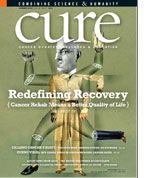Publication
Article
CURE
EPA Plans to Cut Radon Program, Despite Continued Cancer Risk
Author(s):
While smoking is the leading cause of lung cancer, No. 2 is radon, a naturally occurring gas that’s potentially damaging to lung tissue.
In the U.S., the No. 1 cause of lung cancer is smoking. At No. 2 is radon, a naturally occurring gas that’s potentially damaging to lung tissue. That’s news to most people, even though the link between radon and lung cancer is well-documented and the U.S. Environmental Protection Agency (EPA) has been urging Americans for about 25 years to protect their homes against unacceptable radon levels.
The 2013 federal budget, which goes into effect this fall, proposes to eliminate funding for the EPA’s State Indoor Radon Grant program, which makes information and technical assistance available to the public. According to the EPA 2013 Budget in Brief, it is among several EPA programs that “have served their purpose.”
While more than a million homes have been modified to reduce radon levels in recent years, an estimated 8 million still exceed safe levels, according to the EPA.
“We’ve made some good progress,” says Bill Long, chief of the EPA’s Radon and Air Toxicities branch, but “we’re behind. I don’t think anyone thinks we have made enough progress.”
Almost a century ago, scientists hypothesized there was a link between underground miners who had high rates of lung cancer and their exposure to radon gas. By the 1970s, it was widely acknowledged that indoor radon could reach unsafe levels.
A natural by-product of uranium decay in rocks, soil and water, radon usually seeps inside buildings through cracks and openings in the foundation and can build up over time. In 1988, the EPA and U.S. Surgeon General’s office urged homeowners to test for radon, naming exposure to radon as the leading cause of lung cancer in people who had never smoked.
“Radon has been identified as a cause of lung cancer by the World Health Organization and the National Academy of Sciences,” says Jonathan Samet, MD, professor of preventive medicine and director of the Institute for Global Health at the University of Southern California in Los Angeles. Samet co-authored a 2009 analysis, “Lung Cancer in Never Smokers: Clinical Epidemiology and Environmental Risk Factors,” which stated: “Approximately 10 to 15 percent of all lung cancers arise in never smokers, making lung cancer in never smokers one of the leading causes of cancer-related mortality.”
Media attention has dimmed some since the ’80s, leaving Americans confused, Long says. Some think radon is a problem only in certain areas of the country, in homes with basements, or in older homes. Or, they reason, if neighboring homes don’t have a radon problem, their’s doesn’t either. Not true. Today, the EPA estimates that about one in 15 homes throughout the U.S. has excessive radon levels. Even new homes built using radon mitigation techniques should be tested.
Most people have a hard time understanding a risk they can’t see, particularly when they don’t perceive immediate harm, says Janice Nolen, assistant vice president of National Policy and Advocacy for the American Lung Association. Protection requires homeowners to buy a test kit (available at most home stores for between $20 and $50). If results indicate elevated radon levels, a qualified radon mitigation contractor can make the fixes for between $200 and $2,500, depending on whether the construction is new or existing. The process includes installing a vent pipe system and fan, sealing foundation cracks or ventilating naturally. Such measures could prevent radon-related lung cancer deaths, which number more than 20,000 annually, according to the U.S. Surgeon General’s office.
Changing policy is often more effective than trying to change attitudes, Nolen says. Radon will move back onto the radar screen, she says, when homesellers are required to disclose whether radon fixes are needed, or when government subsidized housing must meet acceptable radon levels. In the absence of policy change, “the education part is critical,” she adds. “We have no other way to let the public know that this is a serious threat.”






